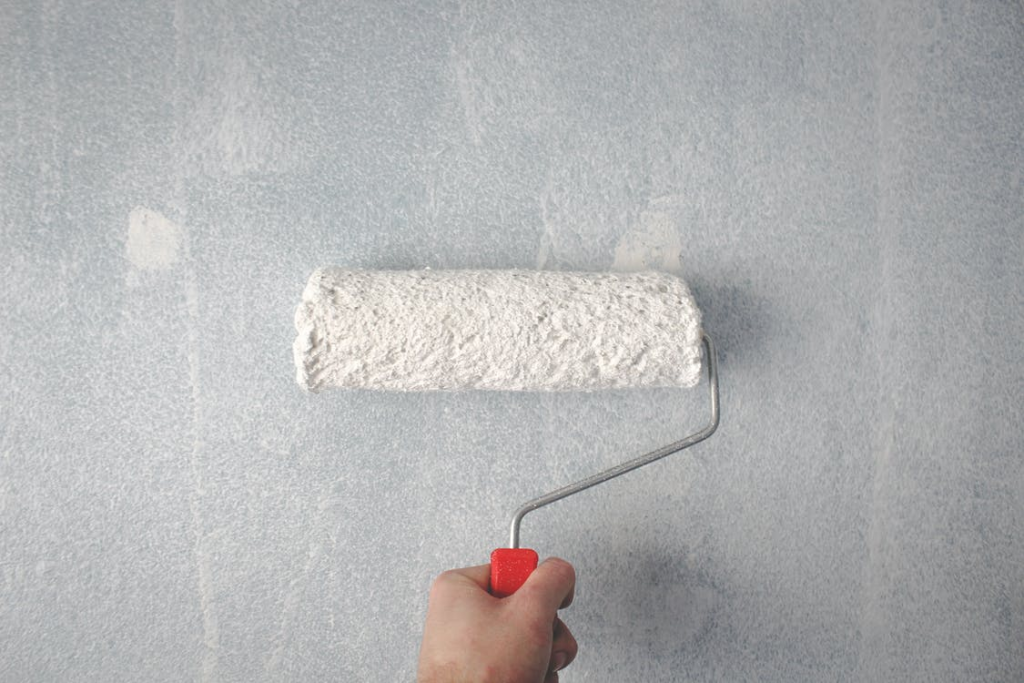
Applying paint directly to new drywall without primer is not advisable.New drywall is very porous and absorbs a lot of paint. Painting unprimed drywall results in a poor finish. You’ll need many coats for full coverage. Always prime new drywall first. It saves time and money. If the drywall is already painted, paint with a built-in primer might work. This is suitable if you keep the same sheen and color. For meaningful color changes, use a separate primer for best results.
Does Paint with Primer Better Than Drywall Primer?
Drywall primer and paint serve different purposes. Primer mainly contains polyvinyl acetate (PVA),similar to carpenter’s glue. PVA seals the drywall’s porous surface and joint compound, improving paint adhesion. PVA primer adheres better to raw drywall than acrylic paint. Conversely, acrylic paint bonds more effectively to primer than directly to drywall. Primers come in various grades; high-build primers excel at filling minor seam imperfections, creating a smoother drywall finish.
Do You Need to Prime a New Drywall?
Priming new drywall is essential. Fresh drywall is porous and soaks up paint pigment. Primers also cover seam sealer and create a strong base for decorating or painting skim-coated drywall. While paint-and-primer combos exist, separate products are often better.Primer is vital for repaired drywall or drywall in kitchens and bathrooms. It acts as a barrier, preventing mold growth.
Do Paint and Primer Help with Adherence?
Primers excel at boosting paint adhesion, a key benefit. Primer acts like glue, helping paint stick firmly to surfaces. This is great because it extends the paint’s lifespan. Also,primer prevents new drywall from absorbing paint,letting your chosen color pop. This is crucial when using rich, dark colors. They’ll stay vibrant for longer. Plus,priming drywall first improves paint bonding,making cleaning and upkeep easier without fading the color. Applying one coat after priming is better than applying two coats without it.
Do Regular Paint Work Well With a New Drywall?
Many drywall manufacturers now suggest using standard flat latex paint as a primer,instead of specialized drywall primers. Basic flat latex paint usually costs less per gallon than premium finishing paints. Similar to tinting a primer-sealer, you can tint your flat white latex paint to more closely match the final wall color.
Does primer-Sealer Work Better Than Paint with Primer for Drywall?
The most common method for priming drywall involves applying a specialized primer-sealer. These primers are designed specifically for drywall surfaces. You can find both water-based and oil-based drywall primer-sealers, depending on your needs.
Besides that, you can pick standard sealants. they work best on smooth, well-finished walls. Or, choose high-build primer-seals. These fill gaps and flaws in drywall. high-build options cost more. But, they’re worth it if your drywall is uneven to start.
Priming sealers can be tinted before use. This boosts thier performance and ensures the primer better matches your chosen topcoat color. many paint stores offer color tinting for sealers at a small extra charge, sometimes even free.
Does primer-Sealer Budget-Kind Than Paint with Primer for Drywall?
Drywall primers mainly improve the look of your walls. They can also save you money. Expect to pay $15 to $25 per gallon, depending on the brand you choose.
Drywall primer and builder-grade paint often cost about the same. Therefore, skipping primer and using paint directly on drywall won’t save you much money.
High-quality paints can cost $60 to $100 per gallon. Choosing drywall primers offers substantial savings.Primers are typically three to four times less expensive per application compared to premium colored paints.
Does Primer Equalize the Porosity of a New Drywall?
It quickly soaks into surfaces like drywall, paper, and even textured areas, creating a uniform base for paint. This ensures consistent adhesion. have you ever seen painted walls where the joints are visible at an angle? This is called joint banding or flashing. Drywall primer significantly reduces,or even eliminates,this issue.
What Shoudl You Look for in a Primer for a New Drywall?
uneven drywall mud creates an imperfect surface. priming before painting ensures a smooth finish. look for drywall primers with strong adhesion and lasting durability. For painting or restoring drywall, consider a stain-blocking primer or sealer. This creates a fresh, paint-ready base.
What Happens if a New Drywall is Not Primed?
Fresh drywall needs priming before painting. This ensures the paint sticks properly. Temperature changes or the habitat won’t damage it. Key steps include sanding, vacuuming, and wiping the drywall clean.
Drywall primer acts like glue,ensuring paint sticks properly. Without primer, especially in humid conditions, paint is prone to flaking.Poor adhesion between paint and the wall can also make cleaning more difficult after the paint dries.
